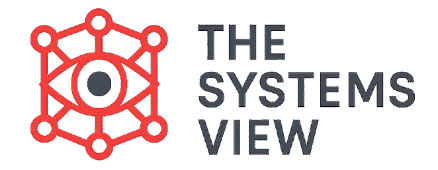We’ve learned that all of Systems Thinking is built on two simple ideas: reinforcing loops that drive change, and balancing loops that seek stability. Now, it’s time to see how these two building blocks combine in different ways to create the eight common patterns we call Systems Archetypes.
Understanding how the loops connect is the key to seeing the hidden structure behind a problem. When you can see the loops, you can stop reacting to the symptoms and start finding the leverage point to make a real change. This article will break down each of the eight archetypes and show you the loop structure that makes them work.
Important: Think of the loops as the DNA of a system. A reinforcing loop is a positive feedback loop that creates growth, and a balancing loop is a negative feedback loop that brings things back into balance. Every archetype is a unique combination of these two forces.
1. Fixes That Fail
This archetype is a combination of a balancing loop and a reinforcing loop.
- The Balancing Loop: You have a problem, and you use a quick fix to solve it. This loop gives you a fast, temporary sense of relief.
- The Reinforcing Loop: The quick fix has a hidden, delayed side effect. This side effect then makes the original problem even worse, creating a vicious cycle of bigger problems and more quick fixes.
The quick fix makes the reinforcing loop stronger, which is why the problem never really goes away.
2. Shifting the Burden
This archetype is built around two balancing loops competing with each other.
- Balancing Loop 1 (The Symptomatic Solution): This is the easy, quick fix. It gives fast relief and makes the problem seem to disappear.
- Balancing Loop 2 (The Fundamental Solution): This is the real, long-term solution that is harder and takes more time.
The problem starts when the symptomatic solution is used over and over. This creates a side effect that weakens the ability to use the fundamental solution. The system then becomes dependent on the quick fix, and the real problem gets worse over time.
3. Limits to Success
This archetype is a simple but powerful combination of one reinforcing loop and one balancing loop.
- The Reinforcing Loop: The system is growing and is in a virtuous cycle of success. The more you succeed, the more you are able to succeed.
- The Balancing Loop: As the reinforcing loop gets bigger, it hits a limit. This could be a limited resource, a lack of staff, or a natural limit to how fast something can grow. This limit then creates a balancing loop that stops the growth and can even cause it to decline.
The trap is that people keep trying to push the reinforcing loop harder instead of addressing the balancing loop that is holding them back.
4. Drifting Goals
This archetype is made of a goal-setting process that is being “balanced” by a performance gap.
- The Balancing Loop: There is a gap between a goal and the current performance. A balancing loop tries to close that gap by either improving the performance (the right way) or by lowering the goal (the wrong way).
- The Vicious Cycle: When the goal is lowered, it creates a reinforcing loop. The new, lower goal makes the current performance seem good enough, which makes it easier to lower the goal again in the future. The standards get worse over time.
This archetype is a mix of a balancing loop with a dangerous reinforcing loop that leads to a slow, silent decline.
5. Growth and Underinvestment
This archetype is a combination of a reinforcing loop and a balancing loop, with a “performance standard” in the middle.
- The Reinforcing Loop: Success creates growth, which gives you more money to invest, which creates more success.
- The Balancing Loop: As the growth continues, it creates a need for more investment to maintain a certain level of quality or service (the performance standard). If the investment is not made, the quality of the service drops.
- The Link: The drop in quality then slows down the reinforcing loop of growth. The lack of investment stops the success that created the need for investment in the first place.
This is a powerful archetype that shows how a lack of investment can be the limit to success.
6. Success to the Successful
This archetype is a combination of two reinforcing loops that are linked by a limited resource.
- Reinforcing Loop 1: A limited resource is given to one side. This makes that side more successful, which leads to them getting even more of the limited resource.
- Reinforcing Loop 2: The other side gets less of the resource, which makes them less successful, which leads to them getting even less of the resource.
This archetype creates a powerful, self-sustaining loop that causes a gap between the two sides to get bigger and bigger over time. It shows how initial success can create a powerful advantage that makes it hard for anyone else to catch up.
7. Escalation
This archetype is a mix of two reinforcing loops that are in a competition with each other.
- Reinforcing Loop 1: Side A takes an action against Side B. This is seen as a threat by Side B.
- Reinforcing Loop 2: Side B reacts to the threat with an even bigger action, which is seen as an even bigger threat by Side A.
Both sides are in a reinforcing loop that keeps getting bigger and bigger, causing a destructive cycle where the goal becomes simply to “win” the fight, no matter the cost.
8. Tragedy of the Commons
This archetype is a combination of many reinforcing loops that are linked by a shared resource.
- Reinforcing Loops: Each person using the shared resource is in a reinforcing loop. The more they take, the more they gain, which encourages them to take even more.
- The Limiting Condition: The shared resource is a limited balancing condition. It can only renew itself at a certain rate.
The individual reinforcing loops overwhelm the shared resource, causing it to be used up faster than it can be renewed. This leads to a shared loss for everyone.
Conclusion
Understanding how reinforcing and balancing loops combine to form these eight archetypes is the foundation of Systems Thinking. Once you can see the loops, you can stop being a victim of the patterns and start becoming the person who can change them. By recognizing these structures, you can find the leverage points that will allow you to make a small change that has a big, positive impact on the whole system.



